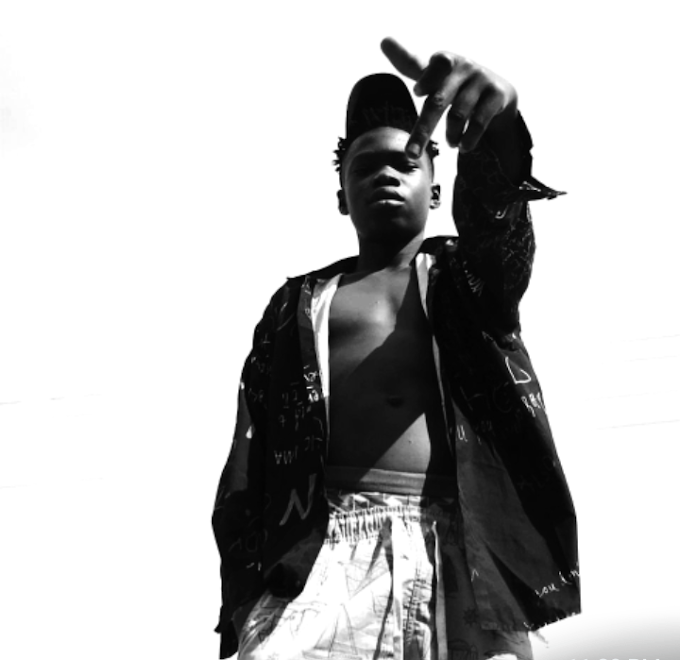 Playlist
Playlist
History Of Techiman/Takyiman (From Bono Manso to Techiman). Part l - stepupghana
Techiman Traditional Area is located within the Bono East Region of Ghana. It shares common boundaries with Wenchi Traditional Area to the North and West, Mo Traditional Area to the North-East, Nkoranza Traditional Area to the South and East, and Offinso Traditional Area (in the Ashanti Region) to the South. Techiman hitherto known as Bono Manso was the home to Akan people, and centre for Akan culture and traditions.
Bono Manso also spelled Bono Mansu, was one of the earliest towns of Bonoman, established by Bonohene Nana Asaman and Bonohemaa Ameyaa Kesse in the 11th century after migrating from the Amowi cave. Nana Asaman was the head of the Ayoko/Ɔyoko abusua.
Bono means pioneer. Bono Manso therefore means “place of the pioneers" or "on the place/state of Bono". Bono Manso was the capital of the centralized Bono state/Bonoman of West Africa. It was situated on the northern boundary/forest savanna transition of the Akan world and was an important political, economic, and religious settlement. It grew into a large multi-ethnic merchant center which developed during the periods of transcontinental sub-Saharan trade. Bono Manso and it satellite villages were positioned along trade routes that was initially linked to the Inland Niger Delta cities of Djenne, Timbuktu and Gao. Bono Manso had approximately 500 houses with 77 streets, with over 5,000 inhabitants.
Muslim Dyula/Mande/Wangara merchants from the Malian Empire and Soninke traders traveled to Bono Manso with textiles, salt, and brass which they exchanged for gold, kola, and slaves. As seen, the Bono participated in long-exchange networks in between 1200s and 1600s with Sudanic merchants over much of West Africa. Bonohene Akumfi Ameyaw l introduced Fontomfrom and Atumpan drums from North Africa in the period of 1320s.
Brass objects included bells, gold weights and jewelry. The earliest brass casting at Bono Manso was likely in the 14th to 15th centuries. Bonohene Obunumankoma (1363–1431) played a pioneering role in establishing gold weight (abramboɔ) and scales/balances(nsennea), and introduced gold dust as a currency. Later, when European merchants arrived in God Coast in 1471, one of their goals was to cut the Muslim/Mande middlemen out of the gold trade by procuring gold materials directly from the Akan goldfield traders, by establishing trading outposts along the Coast or Atlantic coastal settlements.
Bonohene Afena Yaw (1495–1564) is credited with, and whom the Afena swords were created in his name. Bonohene Akumfi Ameyaw II(1649–1659) is credited with introducing the double decker umbrella known as Bidabiakyi/Bitebiso. Infact, all the Bonohenes and Bonohemaas played an important role for Bono Manso, and Bonoman as well as Akan. Their achievements and legacies were unmatchable, which contributed to the success of Bono Manso.
Bonohene Kwakye Ameyaw was installed in 1712, he was known for erecting the Golden Wall. He was very affluent, next to Mansa Musa of Mali empire in terms of wealth. This earned him the appellations/epithet; "Kwakye adeɛ a ɛfɛ, yɛde sika na ɛyɛ". "Ameyaw odi sika atomprada". During the period of 1690s, some remnants of Amakom fled from the attacks of Asantehene Osei Tutu l due to chieftaincy dispute. They were Adu, Adu Donyina and Baffo Pim. However, Adu stayed at Kodie while Adu Donyina later died at Soaduro/Swedru. Baffo Pim, the nephew of Adu Donyina and his people however continued the journey and sought refuge in an area within the confines of Bono Manso.
Upon arrival at the final destination in early 1721, Baffo Pim met some three old men who were the hunters of Bonohene Kwakye Ameyaw. Their names were Sene Diamin, Dasi and Ampofo with their sister Duoduwaa Amane. It was from these old men that Nkoranza got its name, Nkora in Twi language is shortened from "Nkokora" which means "old men" whilst "nsa" stands for mmiensa(three). Nkoransa therefore means "three old men". Baffo Pim requested the three old men to appeal to the Bonohene to enable him stay at the village (Nkoranza/Akora San). The three old men also conveyed the message to Forikromhene Kesse Basahyia, the Benkumhene to the Bonohene Kwakye Ameyaw. The request was granted. Baffo Pim used to attend to the royal court of Bono Manso to pay homage to Bonohene. During a New Year festival at Bono Manso in 1722, all the chiefs and other subordinates under Bonohene except Baffo Pim, had gone to pay homage to the king as traditions demanded. Baffo Pim was not able to reach Bono Manso at the expected time. His delay prompted one of the princes called Boyemprisi, Nkyeraahene, who rode a horse to find out what was happening, as the Bonohene was about to rise. When he met Baffo Pim on the road, misunderstanding ensued, Boyemprisi slapped Baffo Pim in the presence of his people. Bonohene heard of the incident, which he consoled on behalf of his son, and placated Bafo Pim. However Baffo Pim harboured the pain.
History indicates that on one event, the Bonohene Kwakye Ameyaw sent a gift of gold dust (worth £1000 at then) to the Asantehene Opoku Ware l via an emissary, Baffoe Pim. However, Baffo Pim swapped the gold dust for guns and gunpowder at the coast, to Asantehene Opoku Ware. When Opoku Ware received the gift being the guns and gun powder, he and his elders interpreted the gift as an invitation to war. Opoku Ware waged a war on Bono Manso, resulting in its defeat in 1723. This defeat affected all the Bono states/cities/towns, since Bonohene was the head. Baffo Pim was made the chief of Nkoranza and much of the territory of Bono Manso fell into Nkoranza.
Bono Manso was known for its artistic industry.
Following the 1723 war, the Bono intelligentsia–goldsmith, craftsman, weavers, carvers, musicians etc were taken to Kumase to teach the Asantes, Asantehene and his court, the civilized ways of life. After the conquest, some of the Bono Manso inhabitants fled to northern Togoland settling between Borada and Ahamansu –Papase; others went as far north as Kpembi in eastern Gonja and are called Mbong-Wule by the Gonjas. While others moved to Manso near Bekwai and form part of the Amansi state. Some too sought refuge in Gyaman while others moved to the founding town of Abease. Others went in different directions. Bonohene Kwakye Ameyaw and some of the royals fled to Amoma now in Kintampo for refuge and later moved to Buoyem while the heir apparent were taken to Kumasi.
The rest of the remnants fled to the nearby town of Techiman, and revived it. Techiman also spelled Takyiman succeeded Bono Manso in 1740 as a vassal to Asante. Takyiman had been established by Nana Takyi Firi, a royal of Bono Manso and a son of Taa Takyiwaa. So after years of chaos, Ameyaw Gyamfi, a prince of Bono royal lineage and Ameyaa Adiyaa, a princess who had lived in hiding for years near Forikrom, returned and ruled as Takyimanhene and Takyimanhemaa in 1748. Most of the Fantes had fled to the Coast and still more left upon Gyamfi's arrival. Robbed of its craftsmen, singers, drummers etc, Takyiman became a backwater. Yet they did their best to bring prosperity back to Takyiman. For though Takyiman renewed its trade with Sudan which brought considerable wealth, yet Asante officials robbed it.
Part ll coming soon
#Bono #BonoManso #Takyiman #Techiman #Bonoman #History #Bonohene #Abakosem #Abakɔsɛm #Akan











Contents on this website are for promotional purpose ONLY! ADAMS DO NOT claim Full Ownership of any Content on this website, If you see any copyrights infringed Content here kindly contact us.
Contact us
0243396211
kingdombwoy99@Gmail.com
Comment does not reflect the views of ADAMS